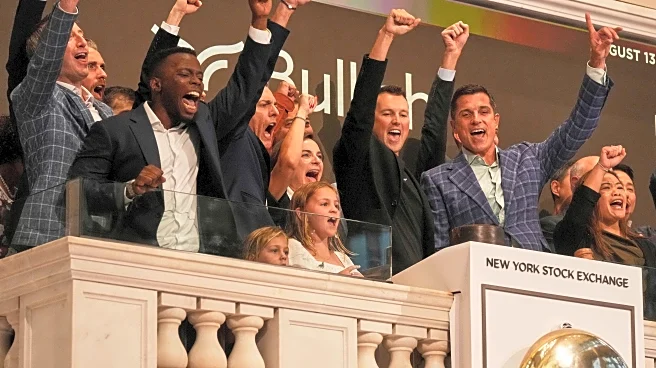What is the story about?
What's Happening?
A recent report by Colliers, a global commercial real estate services provider, has identified movie theaters, attractions, and gyms as leading traffic builders in retail centers during the first half of 2025. The report notes a significant increase in visits to these venues, with movie theaters and music venues experiencing a 9.2% rise, attractions seeing a 5.6% increase, and fitness facilities growing by 4.3%. This trend contrasts with a slight decline in visits to restaurants, superstores, and home improvement brands. The report also highlights the aggressive expansion strategies of brands like Chili's, Crunch Fitness, GameStop, and LA Fitness, which have contributed to increased traffic. Gym attendance has notably surged post-pandemic, with brands such as Orangetheory, Anytime Fitness, and Planet Fitness capitalizing on this trend.
Why It's Important?
The growth in traffic to movie theaters, attractions, and gyms underscores a shift in consumer behavior towards experiential activities rather than traditional retail shopping. This trend suggests a lasting change in consumer priorities, emphasizing health, wellness, and entertainment. The increase in gym attendance indicates a solidified commitment to health and fitness among Americans, which could have long-term implications for the fitness industry and related sectors such as athleisure retail. Additionally, the expansion strategies of brands like Chili's and Crunch Fitness reflect a broader economic resilience, particularly among high-income households, as noted by a Federal Reserve working paper. This resilience is crucial for sustaining retail sales growth, projected to increase by 1.5% in 2025.
What's Next?
Retail centers and businesses may continue to adapt to these consumer trends by enhancing experiential offerings and expanding fitness-related services. The focus on experiences over merchandise could lead to further investment in entertainment and wellness facilities. As high-income households drive consumer resilience, businesses might tailor their strategies to cater to this demographic, potentially influencing pricing and marketing approaches. The ongoing expansion of fitness brands suggests continued growth in the sector, which could lead to increased competition and innovation in fitness services and products.
Beyond the Headlines
The shift towards experiential activities raises questions about the long-term impact on traditional retail sectors and the potential for further integration of entertainment and wellness into retail environments. Ethical considerations may arise regarding the accessibility of these experiences for middle- and lower-income households, who are reportedly holding back on spending. The emphasis on health and wellness could also influence public policy and societal norms, promoting a culture of fitness and well-being.
AI Generated Content
Do you find this article useful?













